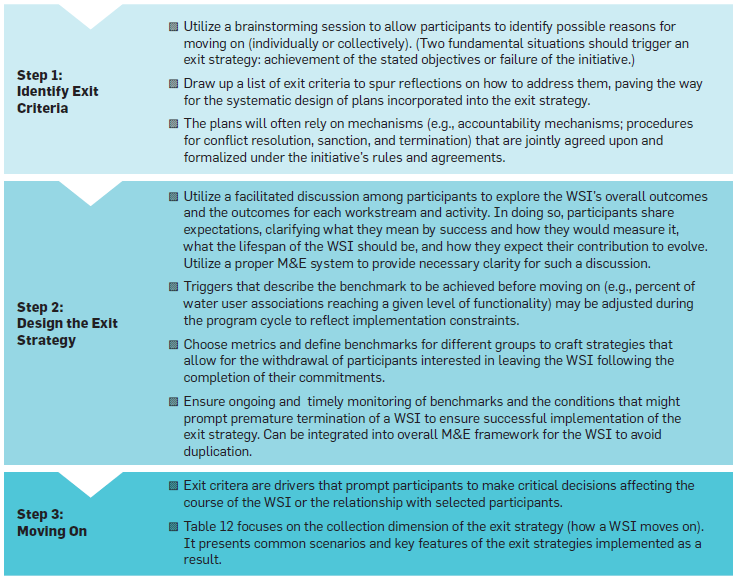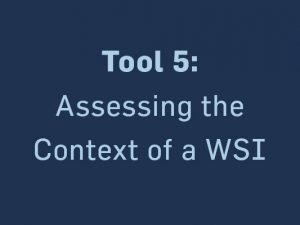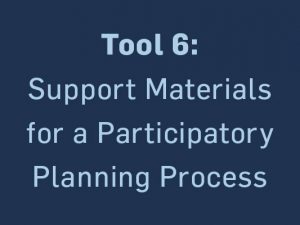| Tool | A set of basic principles to support practitioners in developing exit strategies for WSIs. |
| Question Addressed | What are some key criteria for deciding how the WSI should end? What are some drivers for its conclusion or renewal? How does the local operating context factor into these decisions? |
| Purpose |
|
| Possible Users | WSI participants. |
| Level of Effort | With proper context analysis and existing work related to M&E tools and written agreements, the exit strategy discussion might be included in these processes, lessening the burden. |
| WSI Phase | 1: Incubation and Initial Analysis; 2: Formalization. |
The “exit strategy” is the plan that clarifies how the WSI will end or transform (e.g., once goals have been achieved, or at the end of the project or funding cycle), or that provides for the withdrawal of participants. Fostering sustainability and mitigating risks of failure lie at the heart of this strategy. It needs to be designed jointly from the onset and revisited regularly as the initiative evolves.
Why and when to develop an exit strategy?
WSIs are usually perceived to be temporary vehicles set up to pioneer and mainstream new collaborative approaches to shared water challenges. Whereas public sector and civil society participants will likely continue to be engaged in these initiatives, companies tend to want to disengage once the water concern has been addressed. Therefore, some WSIs will either transform into, or be handed over to, more permanent structures with little or no business involvement, while other WSIs will simply terminate, becoming a source of inspiration for future initiatives. Because of their transient nature, WSIs generally emphasize the importance of sustaining their positive outcomes and impact. It should be noted that exiting an initiative is difficult, because the beneficiaries come to expect the benefits and link the participants to this delivery. An exit strategy therefore guides the termination or handover of a successful WSI and related communications.





